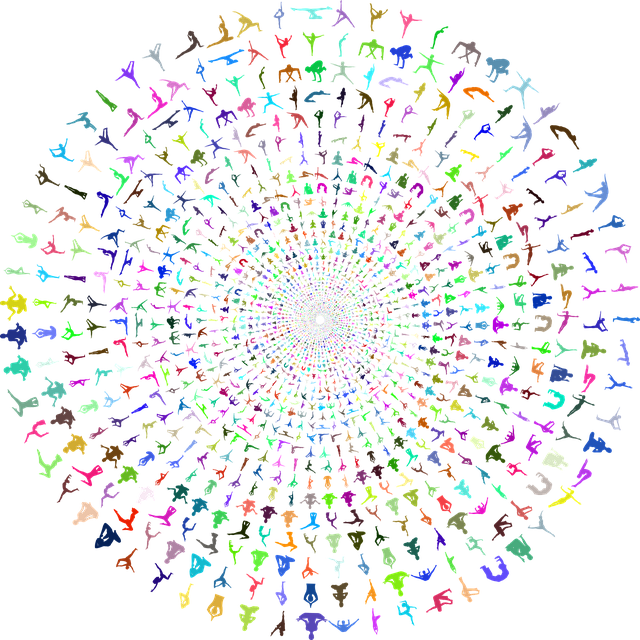In a digital age, holistic wellness requires synchronizing body and mind through integrated therapeutic approaches. Mindfulness, CBT, integrative wellness (art, yoga, meditation), and somatic therapies address physical, emotional, and spiritual needs. These techniques foster emotional balance, resilience, and overall well-being, with somatics focusing on body-mind connections for trauma healing. Combining creative arts with ancient practices, these holistic methods offer comprehensive emotional healing and transformative life changes.
In today’s fast-paced world, prioritizing holistic wellness is more crucial than ever. Unveiling the intricate body-mind connection forms the foundation of achieving total well-being. This comprehensive guide explores powerful therapy techniques designed to nurture both mind and body. From cognitive-behavioral therapy (CBT) for emotional healing to integrative wellness therapy, art therapy for healing, yoga therapy, and mindfulness meditation, discover a diverse range of practices that promote holistic health.
- Unveiling the Body-Mind Connection: The Foundation of Holistic Healing
- Therapy Techniques for Total Wellness: A Comprehensive Approach
- Exploring Creative Therapies: Art and Yoga as Healing Tools
- Mindfulness, Meditation, and Somatic Practices for Emotional Balance and Recovery
Unveiling the Body-Mind Connection: The Foundation of Holistic Healing

Unveiling the intricate body-mind connection is the cornerstone of holistic healing, a therapeutic approach that recognizes the profound interlink between our physical and mental well-being. This concept transcends traditional medical practices, delving into the mind-body relationship to achieve comprehensive wellness. Techniques like mindfulness therapy, cognitive-behavioral therapy (CBT), and integrative wellness therapy tap into this connection, offering powerful tools for emotional healing and overall holistic wellness.
Art therapy, yoga therapy, and meditation are other effective methods that harness the body-mind axis. These practices encourage individuals to explore their emotions, thoughts, and physical sensations in a safe, guided environment. Somatic therapy, for instance, focuses on the body’s wisdom, helping clients access and process deep-seated traumas or stress responses. By embracing these holistic approaches, individuals can experience profound transformations, fostering a sense of balance, calm, and emotional resilience.
Therapy Techniques for Total Wellness: A Comprehensive Approach

In today’s digital era, navigating holistic wellness requires a comprehensive approach that intertwines body and mind. Therapy for holistic wellness encompasses various techniques designed to cultivate total well-being. Mindfulness therapy, for instance, teaches individuals to be fully present in the moment, thereby reducing stress and promoting emotional balance. Cognitive-behavioral therapy (CBT) helps people identify and change negative thought patterns, ultimately improving their mental health. Integrative wellness therapy combines these evidence-based practices with alternative methods like art therapy for healing, yoga therapy, and meditation for holistic wellness to address physical, emotional, and spiritual needs simultaneously.
Somatic therapy, another powerful tool, focuses on the deep connection between the body and mind, helping individuals process and release traumatic memories or emotions stored in the body. When combined, these therapy modalities create a symphony of healing that transcends traditional medical practices. By delving into these comprehensive approaches, folks can experience profound metamorphosis, enhancing not just their physical health but also cultivating emotional resilience and spiritual awareness.
Exploring Creative Therapies: Art and Yoga as Healing Tools

Exploring Creative Therapies offers a powerful approach to holistic healing, merging artistic expression with ancient practices like yoga and meditation. Art therapy for healing encourages individuals to tap into their creativity as a means of emotional release and self-discovery. Through painting, sculpting, or even coloring, people can convey their innermost thoughts and feelings, often accessing parts of themselves that cognitive-behavioral therapy might not readily reach. This therapeutic process facilitates emotional healing by providing an alternative way to communicate and process complex emotions.
Yoga therapy is another ancient practice that seamlessly integrates mind and body. The physical postures (asanas) and breathing exercises (pranayama) in yoga promote relaxation, reduce stress, and improve cognitive function. By focusing on the present moment during practice, individuals cultivate mindfulness, a key aspect of integrative wellness therapy. Somatic therapy also draws from this concept, emphasizing the connection between physical sensations and emotional states, ultimately helping to heal deep-seated traumas that may be affecting overall holistic wellness.
Mindfulness, Meditation, and Somatic Practices for Emotional Balance and Recovery

Mindfulness, meditation, and somatic practices have emerged as powerful tools in the realm of holistic healing, offering a transformative approach to emotional balance and recovery. These techniques, often integrated into therapy for holistic wellness, provide individuals with effective ways to manage stress and process traumatic experiences. For instance, mindfulness therapy encourages people to focus on the present moment, fostering a deeper connection between the mind and body. This cognitive-behavioral therapy technique helps individuals become more aware of their thoughts and emotions without judgment, promoting a sense of calm and clarity.
Art therapy for healing and yoga therapy are other integrative wellness therapy practices that tap into this body-mind connection. Meditation for holistic wellness involves quieting the mind and cultivating a state of profound relaxation, allowing the body to release tension and promote emotional healing. Somatic therapy, which focuses on the physical sensations and movements of the body, helps individuals access and process repressed emotions. These practices are not just beneficial; they are game-changers in fostering emotional resilience and overall wellness.
In conclusion, harnessing the body-mind connection through various techniques like cognitive-behavioral therapy, mindfulness, art therapy, and yoga is a powerful approach to holistic healing. Integrative wellness therapy, which combines these methods, offers a comprehensive solution for achieving total wellness, emotional balance, and recovery. By incorporating somatic practices and creative therapies into one’s routine, individuals can navigate their mental and physical states, ultimately fostering profound transformation and enhanced quality of life.
